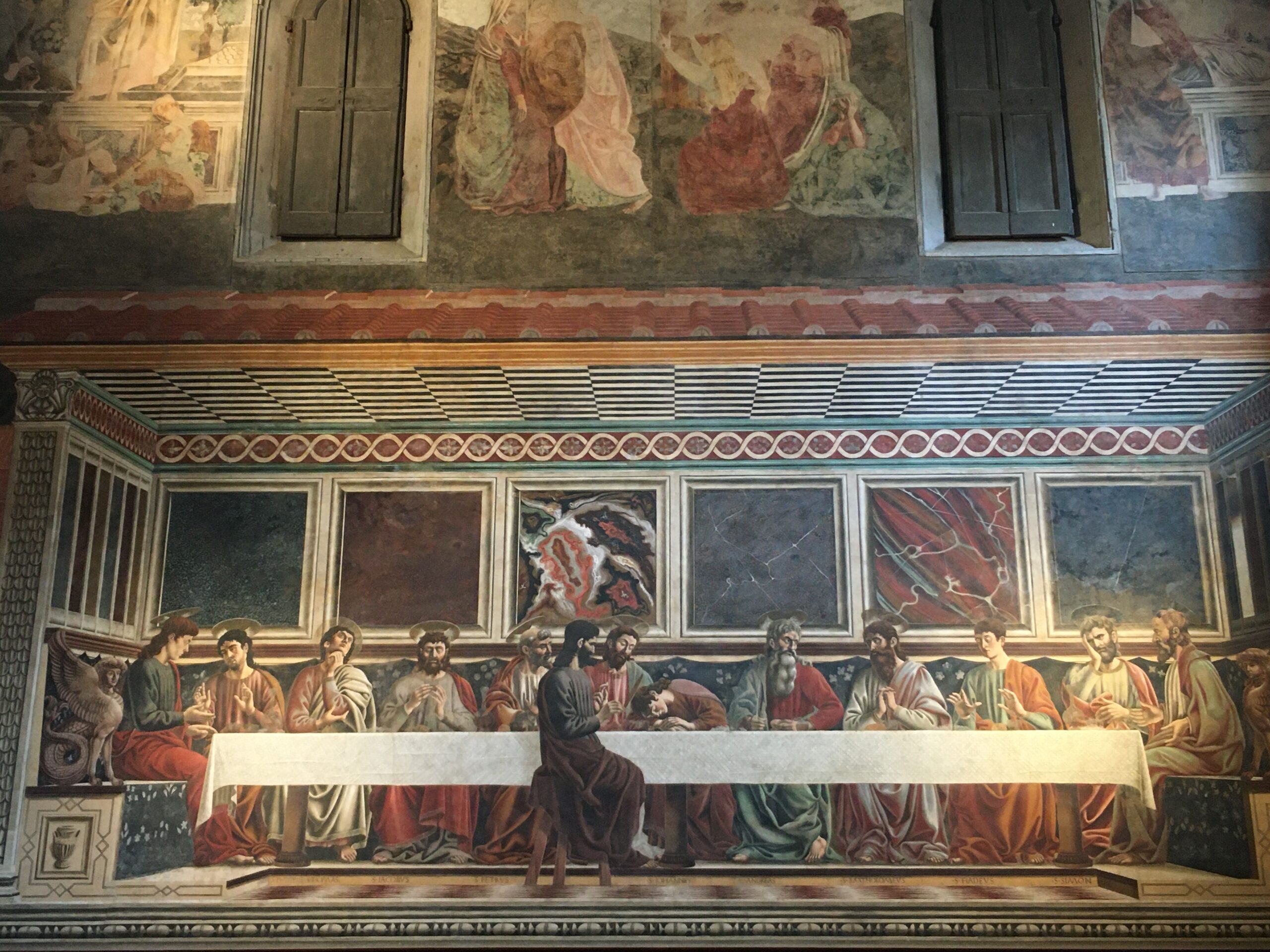
Florence – The Last Supper by Andrea del Castagno
Today we are going to talk to you about a little-known art treasure located in Florence. It is the Last Supper by Andrea del Castagno, which is kept in the Sant’Apollonia Complex.
The Sant’Apollonia Complex was once one of the great female monasteries of Florence. Currently this place is divided between the University of Florence, the military command and the Cenacolo di Sant’Apollonia Museum.
The Cenacolo di Sant’Apollonia was the monumental refectory of the Benedictine nuns. It was frescoed on an entire wall by Andrea del Castagno in 1447. The entire lower part of the wall, in particular, is occupied by a splendid Last Supper.
The scene takes place in a richly decorated environment. And every architectural element is taken care of in the smallest detail. The perspective setting is rigorous, accentuated by the geometric effect of the lines of the floor and ceiling. Above are depicted the Resurrection, the Crucifixion and the Deposition in the tomb.
The dinner of Jesus with the apostles takes place in an old-fashioned room, decorated with luxurious and refined elegance. There is a long table with a white tablecloth, which highlights the horizontal development of the scene. Around the table, the apostles and Jesus are seated on chairs covered with a cloth with floral patterns. All except Judas are on the opposite side on a stool. The placement of Judas separate from the rest of the apostles is typical of the iconography. However, he is usually located to the right, rather than to the left of Christ. His bearded figure in profile recalls that of a satyr from Roman mythology, from which Christians had borrowed many of the physical characteristics of the devil.
Inside the Cenacolo there are also other works by Andrea del Castagno, painted around the middle of the 15th century. There is a frescoed lunette (and its sinopia) with Christ in pity among angels. But there are also a Crucifixion and the sinopia of the Vision of Saint Jerome between Saints Paula and Eustace. On the south wall of the room there is also a Crucifix attributed to Baccio da Montelupo. While other fifteenth-century works coming from the former monastery are exposed in the antirefectory together with paintings by Paolo Schiavo and Neri di Bicci.
Did you like this curiosity? If you want to read more, about thousands of cities, download Secret Maps!
And if you want to listen to something interesting, try the first Travel Podcast Platform. Try Loquis!

